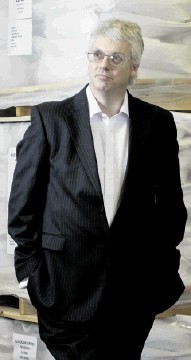
Scottish company Aubin is best known as a supplier of specialist chemicals to the energy industry; particularly bespoke drilling fluids.
For a number of years, talented minds at the company have also been working on gel technologies, including for lifting purposes.
It has developed a new technology known as the Gel Lift System (GLS) and which was short-listed at the 2012 Offshore Technology Awards run by the Society of Petroleum Engineers.
GLS is described as a patented enabling technology for the installation and recovery of structures in subsea environments and is an evolution of Aubin’s still new Deepbuoy technology.
Deepbuoy offers a less expensive but highly controllable different approach to subsea installation and decommissioning work by reducing the need for cranes and crane barges.
The patented low-density liquid gel is capable of buoyancy in water depths to 3,0000m and can be used for lifting, supporting and lowering heavy subsea structures of up to 2,000 tonnes.
Derivative GLS is designed to be used in shallower waters and targeted at the renewables industry.
According to Aubin’s managing director, Paddy Collins, it can be used for lifts from any size, from 20kg to 2,000 tonnes and in water depths to 150m.
GLS works using the Archimedes Principle, one of the oldest scientific discoveries. At the heart of this innovative concept is a novel, low-density gel made up of millions of microscopic glass bubbles which are dispersed in water.
The bubbles are held in place using a gelling agent commonly used in the food industry. This means that the gel is non-hazardous, environmentally friendly and reusable.
The low-density (550kg per cu,m) liquid means that roughly one tonne of GLS will give one tonne of buoyancy in seawater.
Collins says this was demonstrated during recent field trials, where a lift bag of GLS was attached to a 1,050kg clump weight and used to precision place it on the sea bed.
By pumping GLS into the lift bag the weight could then be supported in the water. Pumping small quantities GLS into or out of the bag enabled the weight to be raised, lowered or even made neutrally buoyant so it would “float” underwater, reducing the perceived weight to the point that the 1,050kg clump could be easily moved by the attendant diver.
In contrast to airbags, which have been used for subsea lifting/handling for many years, GLS is incompressible so the buoyant force is independent of depth. This means it is inherently easier to control and much safer.
Collins: “The lack of lifting capability in the UK is a big issue. Aubin is offering the industry a product which essentially changes the boundaries of what it is possible to achieve. GLS offers a safe means to lift, move and place structures on/off seabed without the need for a crane or crane barge.
“GLS is also suitable for small field developments and decommissioning old infrastructure, such as the many smaller structures and subsea tie-backs in the Southern North Sea, where it is not economically viable to rely on cranes.
“Most European locations identified for potential renewables developments can also reap the benefits from using GLS.”
Collins added that the simplification, even elimination of specialist heavy-lift requirements could generate savings “typically in excess of £100,000 per day, thereby accelerating the uptake of renewable technology development in UK waters”.
The company has recently installed and commissioned a new manufacturing capability for GLS and Deepbuoy at its Ellon facility.
It is also working with installation partner Ecosse Subsea Services to develop developing installation techniques utilising GLS.